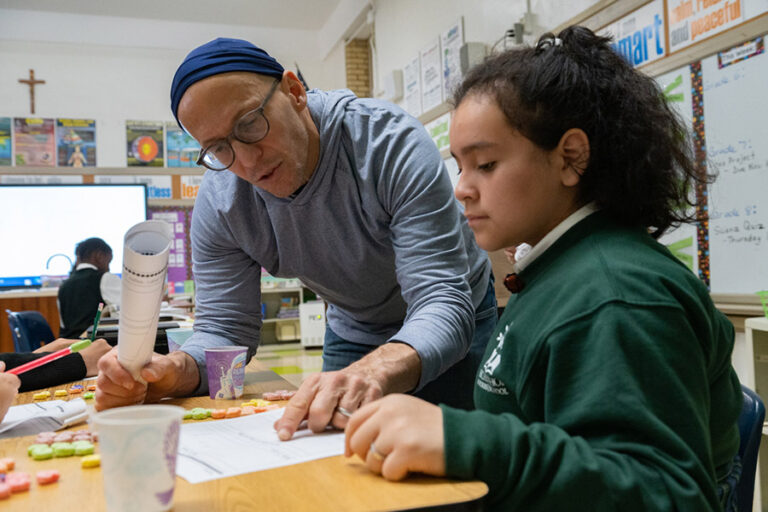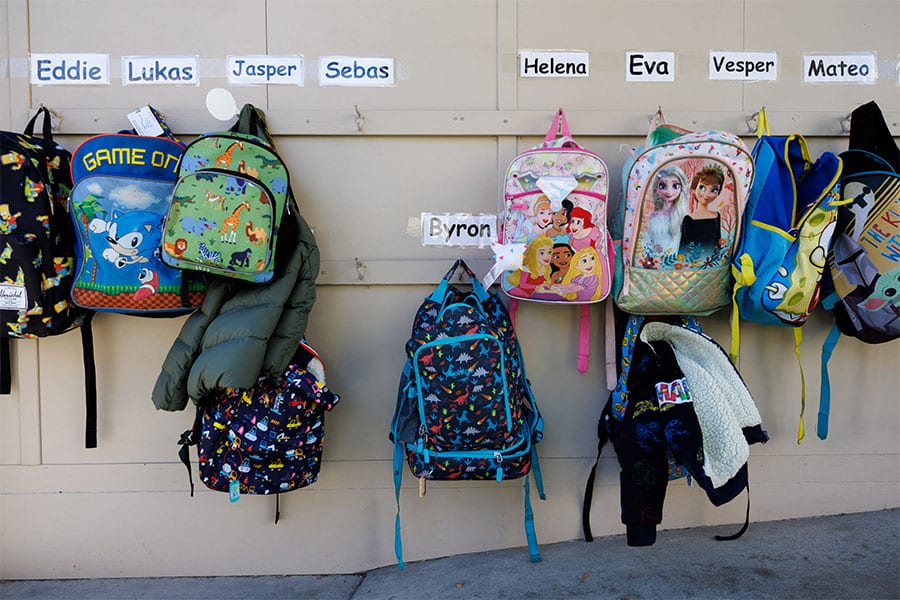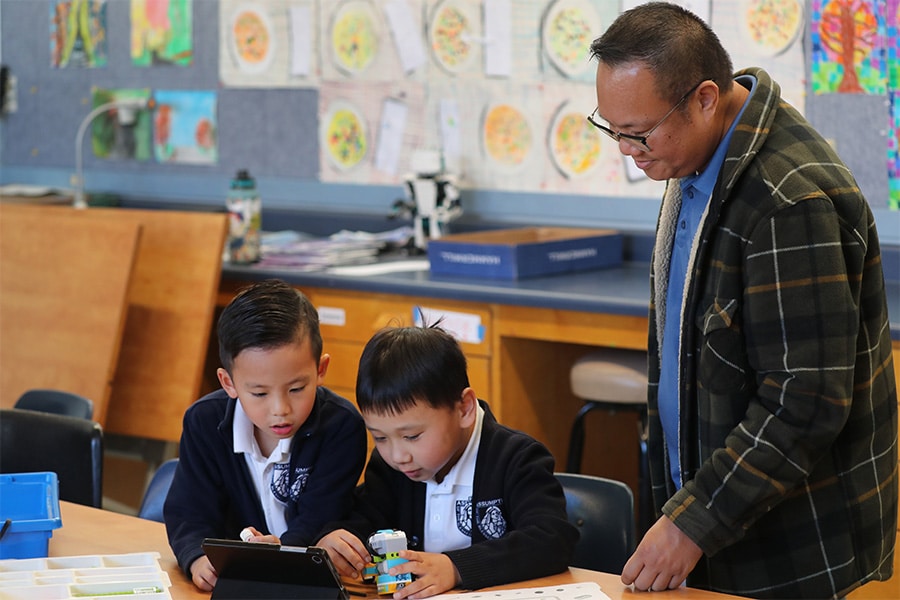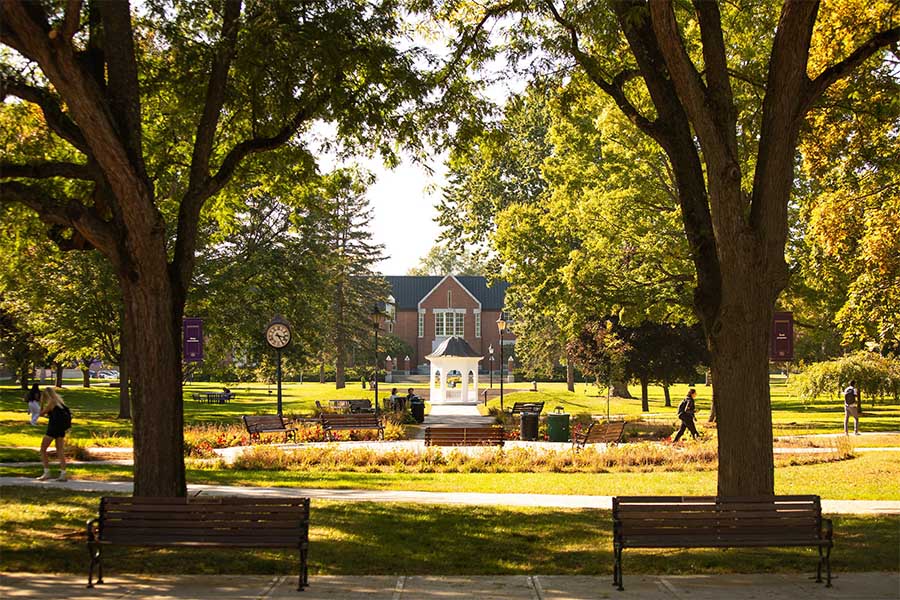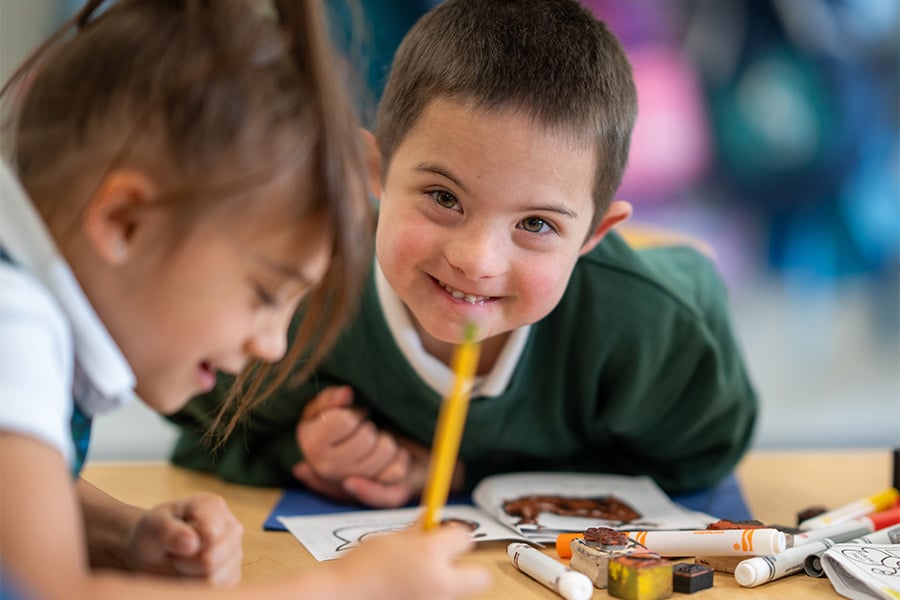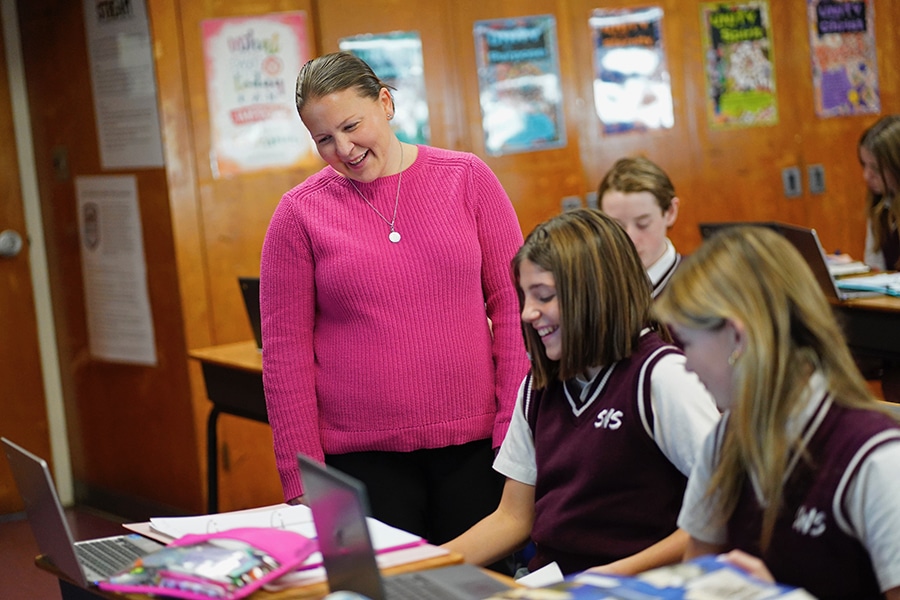Although 14-year-old Cindy Figueroa grew up in a Spanish-speaking household in Baltimore, she felt more comfortable communicating in English.
For her mother, a native of El Salvador, it was imperative that Figueroa communicate fluently in Spanish when talking to her family members, as well as read and write in her mother’s tongue.
The Figueroa family, parishioners of Sacred Heart of Jesus-Sagrado Corazón de Jesús in Highlandtown, enrolled their daughter for first grade in Archbishop Borders School’s dual-language program.

She not only improved her Spanish skills at the school, but she became student body president, a member of the National Junior Honor Society and was motivated to pursue a career in the medical field.
Figueroa said she would like to become an orthopedic surgeon and looks forward to talking to Spanish-speaking patients in their language.
“We always tell children that being bilingual is their superpower,” Principal Amy
Belz said.
Archbishop Borders School is the only Spanish-immersion Catholic school in the Archdiocese of Baltimore and one of the few dual-language schools in Baltimore. It’s located on the campus of Sacred Heart of Jesus-Sagrado Corazón de Jesús.
The multicultural school launched its dual-language program in 2010 when former Principal Cathy Marshall observed many first-generation Hispanic American students losing a critical part of their cultural identity, their Spanish skills.
Dual-language curriculum director Guillermo Brown said dual-language education is based on three pillars: bilingualism and biliteracy, academic excellence and socio-cultural competence.
Archbishop Borders School follows the curriculum for Catholic schools from the Archdiocese of Baltimore and incorporates Spanish language arts according to the Roche Center of Boston College’s Two-Way Immersion Network for Catholic Schools (TWIN-CS).
“Our program is mostly 50/50 in both languages,” said Brown, a parishioner of St. Matthew in Northwood. “Grades are paired with two teachers, one who teaches certain subjects in English and another who teaches subjects in Spanish, and they switch classes halfway through the day.”
During a recent school day, fifth-grade students started their morning class with Spanish teacher Moraima Colón, a native of Puerto Rico.
Their classroom was full of words and phrases written in both languages. Prominently displayed were visuals of cognates – words with similar spelling and meaning in two languages – to help children make the connection between languages.
Although students talk to each other during lunch time or their free time in English, Spanish and even Spanglish, during class they mainly communicate in the language in which they are being taught.
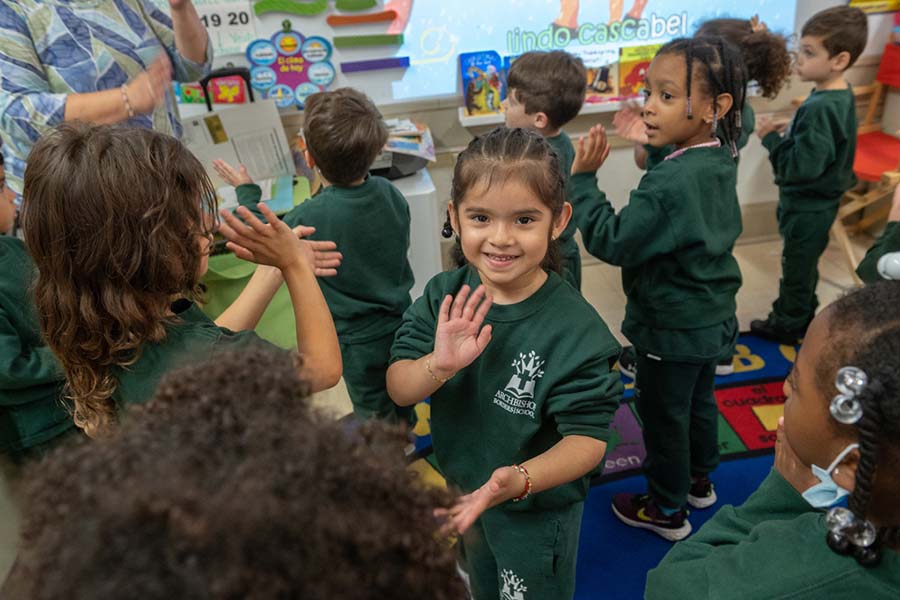
Rachel Friedman, Archbishop Borders School teacher of the year for 2021-22, said teachers encourage peer-to-peer learning.
“Sometimes kids learn better from each other as opposed to an adult because it makes them feel at the same level as their peers, gives more confidence in their own learning and makes them feel part of the school,” Friedman said. “It also gives a deeper understanding of the subject to the student who is teaching.”
On average, students who start the program by pre-K-3 become bilingual and biliterate by fifth grade, regardless of their first language. Fifth and eighth grade students are eligible for the Pathway to the Seal of Biliteracy certificate.
According to Belz, former principal of Immaculate Heart of Mary School in Baynesville and a parishioner of Sacred Heart in Glyndon, many prospective students lacking language skills at older grades are not suitable for the program, but with motivation and family support, they can still be admitted.
Archbishop Borders School launched its St. Martín de Porres Path to Success in the academic year 2022-23, a program that provides individualized and small-group support, as well as language context to those students who need assistance with their English or Spanish skills.
The de Porres program serves 15 students from several grades, most of them new to Spanish.
Archbishop Borders School serves 200 students from grades pre-K-3 through eight coming from more than 35 ZIP codes. The school population is 59 percent Hispanic, 20 percent African American, 15 percent multi-racial and six percent Caucasian.
Students who join the program without a Spanish speaking background are just as likely to succeed in the dual-language program as those who know some Spanish, according to school leaders.
Thomas Cudjoe, who started the program in first grade and is currently in fifth grade, scored one of the highest scores among students from archdiocesan Catholic schools in the MAP Growth standardized test that measures achievement in math, reading, English and Spanish language arts for the academic year 2021-22.
Such achievement led Cudjoe to receive a Knott Scholarship, paying full tuition for the remainder of his years at Archbishop Borders School.
“The magic happens when they are immersed in the classroom,” Belz noted, referring to students learning a subject while learning the language in which the subject is taught.
“Students help each other and figure it out together,” she added. “That is beyond language learning.”
Facts & Figures
- Approximately 60 million people in the U.S. use two or more languages.
- In Maryland, one-third of children ages 0 to 5 – approximately 137,000 young children – are dual-language learners.
- Those who are multilingual tend to have brains more resistant to Alzheimer’s and other forms of dementia.
- Studies find dual-language students have a better ability to focus their attention than other students.
Sources: U.S. Census, Migration Policy Institute, Archbishop Borders School
Read More Schools
Copyright © 2023 Catholic Review Media

